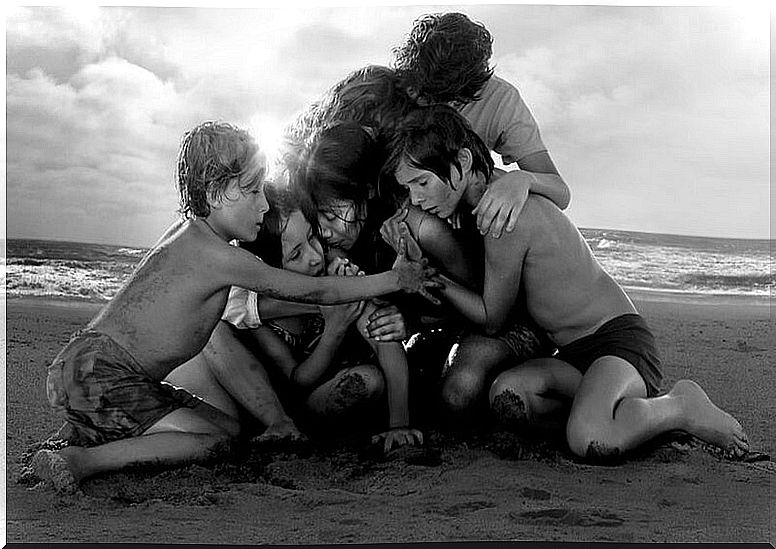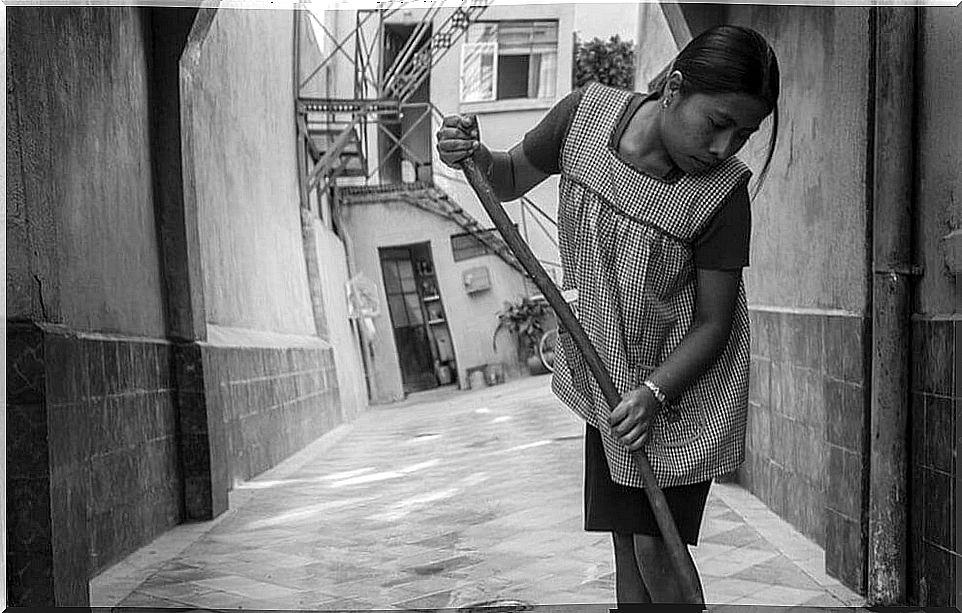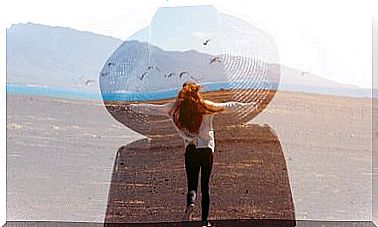Rome, A Portrait Full Of Details

In recent years, the Academy Awards have gone to the hands of three Mexicans: Guillermo del Toro, Alejandro González Iñárritu and Alfonso Cuarón. Three friends, the three from Mexico, the three with many stories to tell… Audiences and critics have surrendered to his talent at the most prestigious festivals on an international level. If last year del Toro conquered us with The Shape of Water , everything seems to indicate that, this year, Roma de Cuarón will win an award.
The Oscars do not understand walls and, in the last five years, they have opted for three foreign directors, immigrants, from a country where the spiritual is very present in its tradition, something that del Toro never abandons in his films. Despite adapting to the new demands, to the new and wide market in which they operate with very high budgets, the Mexican footprint continues to be felt in the trajectory of these three directors.
Rome has already won the Golden Lion at the Venice International Film Festival and, with unanimous applause from the critics, everything seems to indicate that, in the coming months, it will give a lot to talk about. Rome is a memory, it is Cuarón’s childhood narrated from afar, from maturity. Disengaging himself from himself and wrapping himself in the perspective of a woman who would otherwise have been invisible.
Already del Toro anticipated in La Forma del Agua a message of love towards otherness, narrating his film from the perspective of some cleaning workers, moving away from clichés, from “prestigious” jobs … Cuarón does the same in Rome , embracing to his childhood maid, dedicating a film to his figure, his culture and his language. A film in which the exceptional hardly has any prominence, in which the forgotten and the everyday will be the protagonists.
NOTICE: The article may contain spoilers .
Rome , a visual experience
Cuarón sinks its roots in his childhood, in the life of the wealthy family in a troubled environment, such as the Corpus Christi Massacre of 71, to tell us the story of an invisible character, of the domestic worker from the Mixtec people. He gets lost in the details, his camera stops at the little things like scrubbing water, an airplane soaring through the sky or the excrement of the house dog.
In turn, the camera moves with Cleo, the protagonist, shows us her emotions, her routine, follows her, hides her, accompanies her at all times. Through details and camera movements, Cuarón describes Cleo for us, narrates without saying anything in words, the images speak for themselves and build a realistic portrait.
Each of the images is loaded with infinite meanings. Why focus on scrubbing water? Why focus dog droppings? Cuarón uses the context, the visual, all the elements that make up the story, the small things that seem insignificant, endowing them with a powerful and deep meaning that will give us the keys to this story. The invisible makes sense, the invisible is now the protagonist through the portrait of Cleo.
Symbols acquire great importance in Rome , they explain everything that cannot be said in words. Water is synonymous with life, origin and principle. Thales of Miletus already affirmed in antiquity that the arche is water, that is, the beginning of all things. For this reason, water has been seen as a symbol of life, motherhood, immortality … it is associated, in turn, with purification, with rebirth. This is how we see it in some religions such as Christianity, where water will be fundamental in baptism. In Rome , water is present from the beginning, manifesting itself as washing-up water, giving a clue to Cleo’s work.
Throughout the film, the water will appear in different ways: like hail, like shower water, like drops that fall from the clothes hanging… to end in the immensity of the sea. Water is an essential component in the human being and also in our planet. Accompany Cleo during the movie, to finally submerge her in the ocean, saving the children despite not knowing how to swim. A scene in which the character’s catharsis, purification and evolution take place.
Other elements such as fire, reflections, nature and Cleo’s relationship with it are equally important and significant. But, perhaps, one of the most striking is the plane. An airplane that we already see as a reflection in the water in the film’s credits, an airplane that appears in fundamental moments and that reappears in the end. This plane is presented to us as the future of life, as a trajectory and, at the same time, a flight, freedom and adventure that contrasts with Cleo’s routine life.

Rescuing the forgotten
Cuarón goes from the general to the particular, he is situated in a familiar environment, the 70s in Mexico and the various conflicts, but without delving into them. The depth focuses on Cleo, but also on the very family that she presents to us, on the separation of the parents and on the role that her mother must acquire. The film is presented as life itself; conflicts, problems and action occur unexpectedly, although it leaves us clues.
The image of the father appears linked to that of the car; a large, American car that barely passes the door of his house and that represents power, money. However, the father leaves so as not to return in a much smaller car and gives us a scene that, at first, we do not understand too much, but that will make sense with the outcome of the film.
The mother is another great protagonist, she is in charge of getting rid of the emblematic car, thus breaking with her past, buying a smaller, more practical one. The embrace between his parents is really significant, while the mother is distressed and hugs him as if she does not want to let him go, the father is more distant. Finally, it is the mother herself who reveals to us that they have separated and, in this way, we understand her role in the film, her worries and anxiety.
Rome envelops us with a delicate and nostalgic black and white, and offers us the possibility of getting to know the Mixtec people or, at least, their language. The indigenous people, faithfully represented by Cleo, finally come to prominence in the cinema, finally shown before our eyes as a reality that exists, lives, suffers and smiles. Cleo, despite her routine life, also falls in love, suffers from heartbreak and we accompany her in some of the most significant moments of her life.
The birth scene is really overwhelming, we managed to feel Cleo’s pain and the guilt that the character feels and it manifests itself in the ocean. In turn, Cleo and her partner Adela are played by two Mixtec women with no acting experience, but who bring enormous realism to the film.
Cuarón reconciles with his childhood, introduces us to Cleo, inspired by the figure of Libo, who was his nanny. Build a perfectly narrated portrait, immerse us in the details of everyday life, take us to the sensations and emotions of Cleo, following her through all the spaces of the house, showing us the different rooms and the differences between the life of the family well-off and that of the domestic worker. To, finally, give him a well-deserved tribute, embrace the diversity of cultures, languages and people who inhabit the same world.









